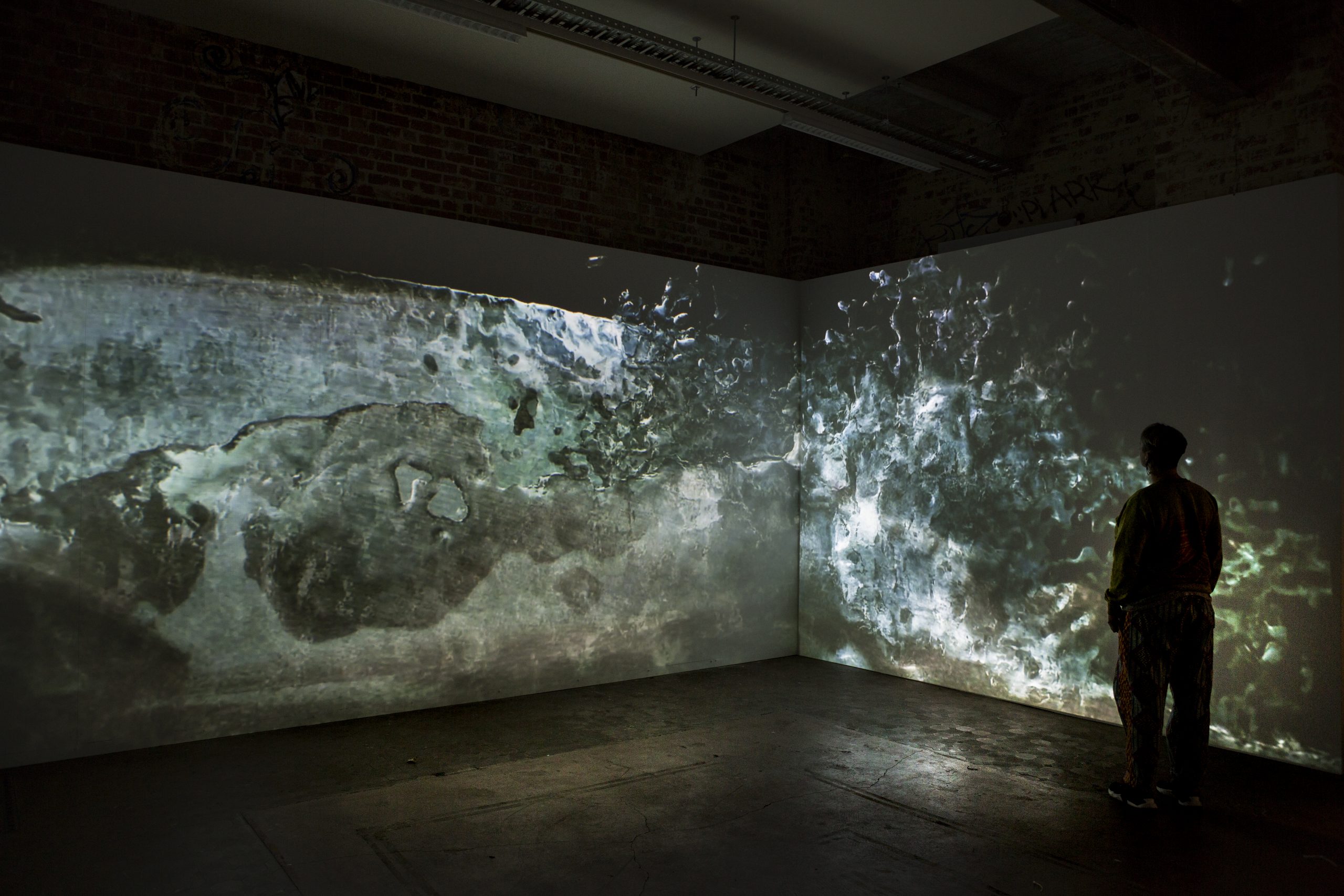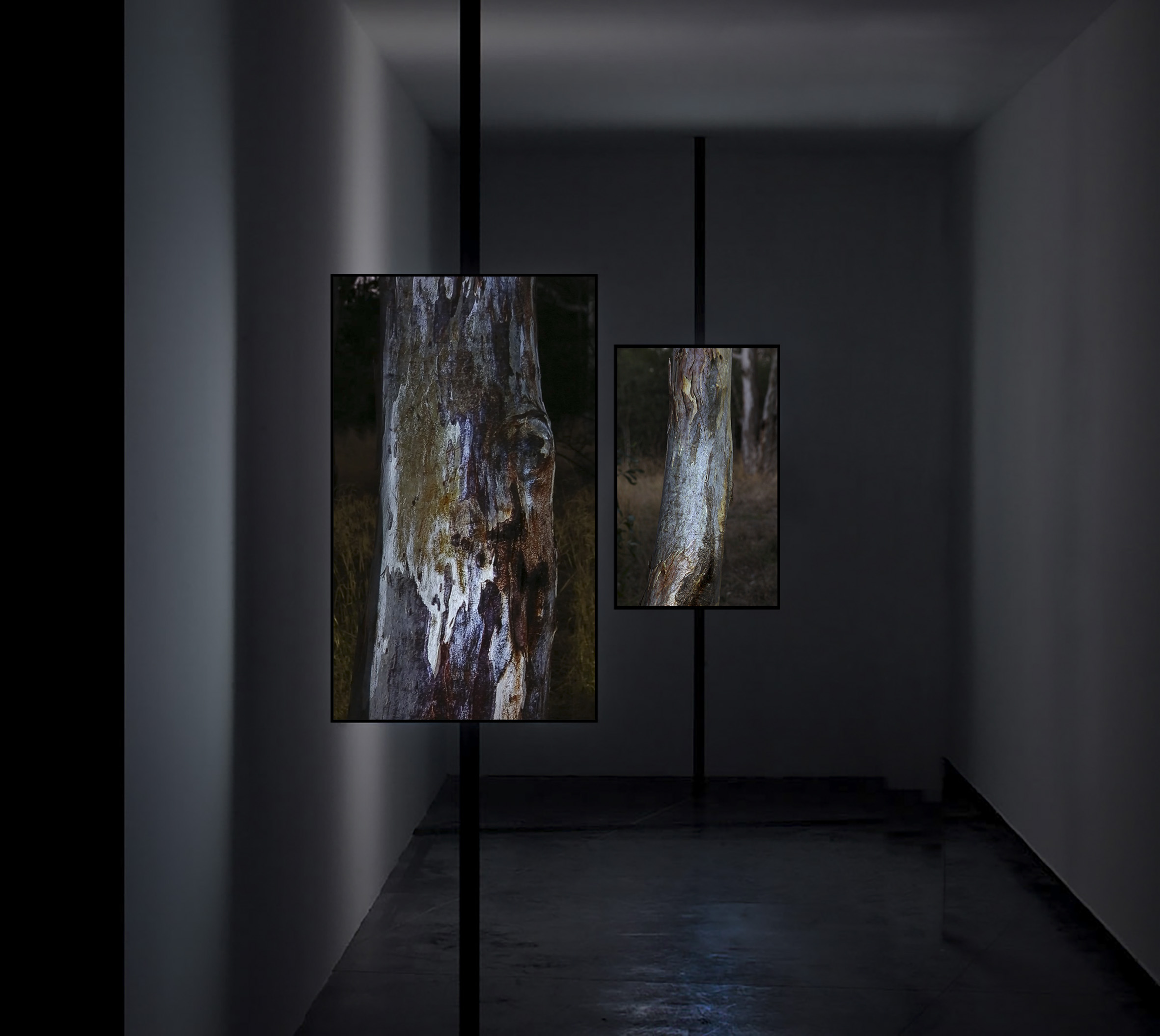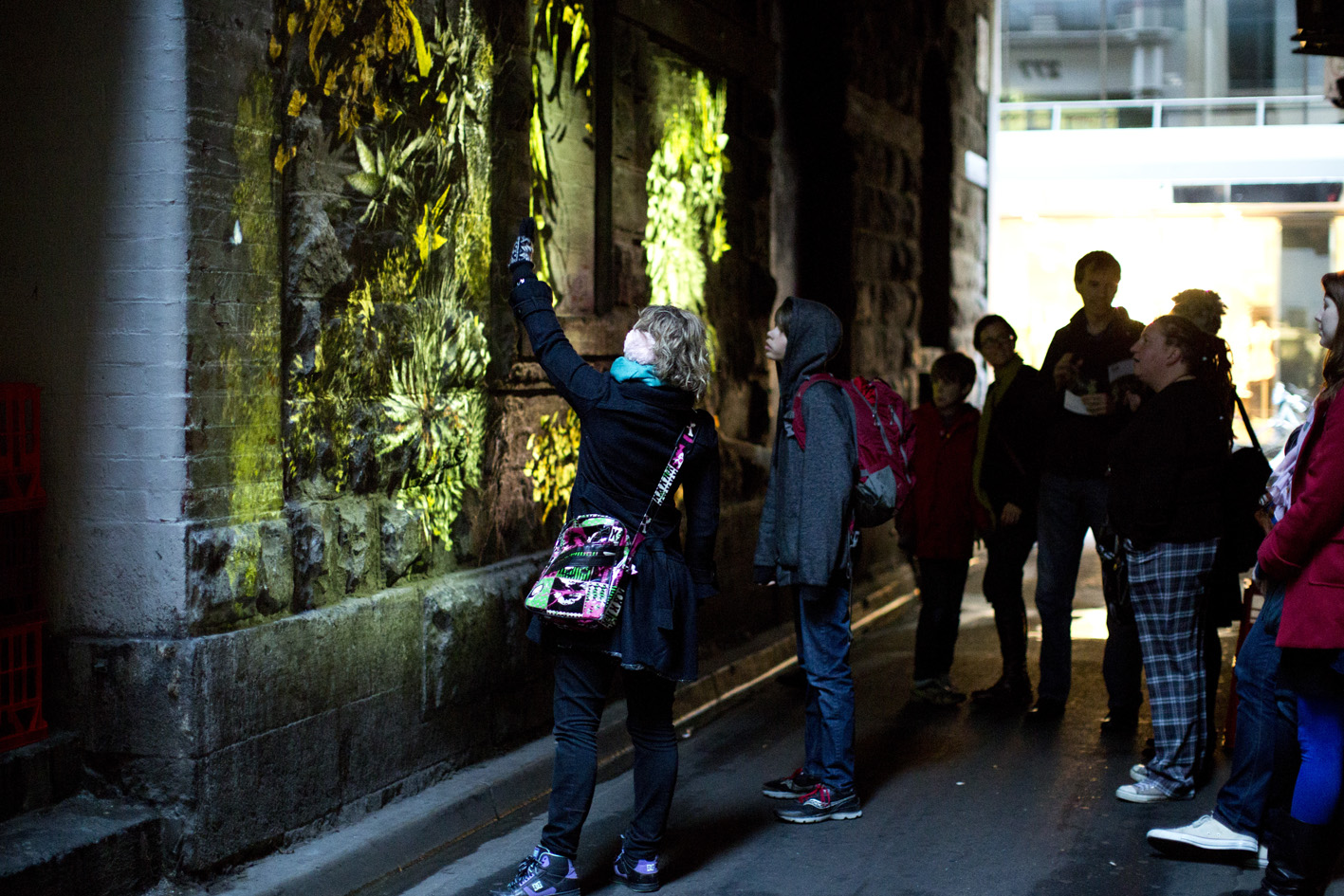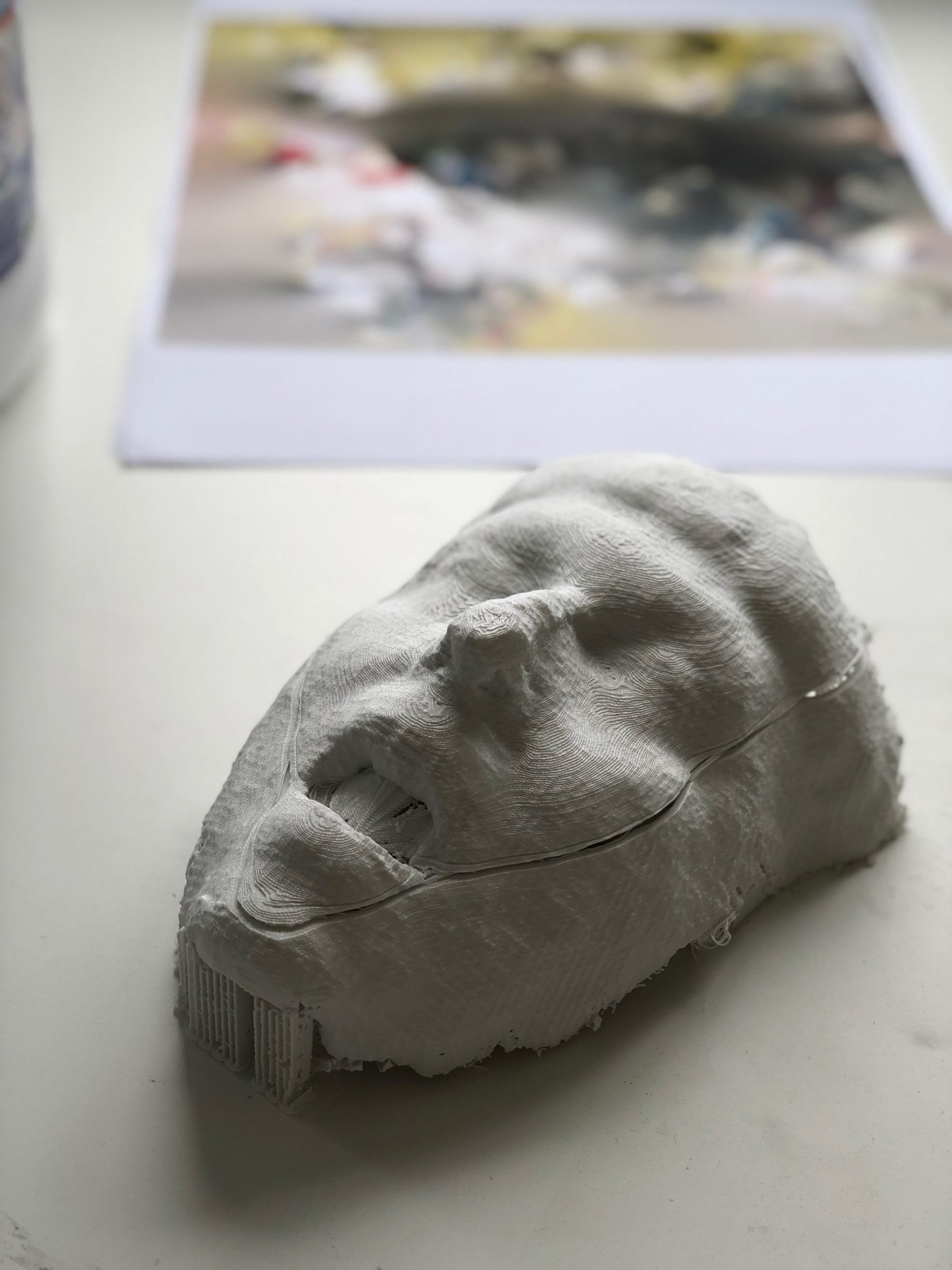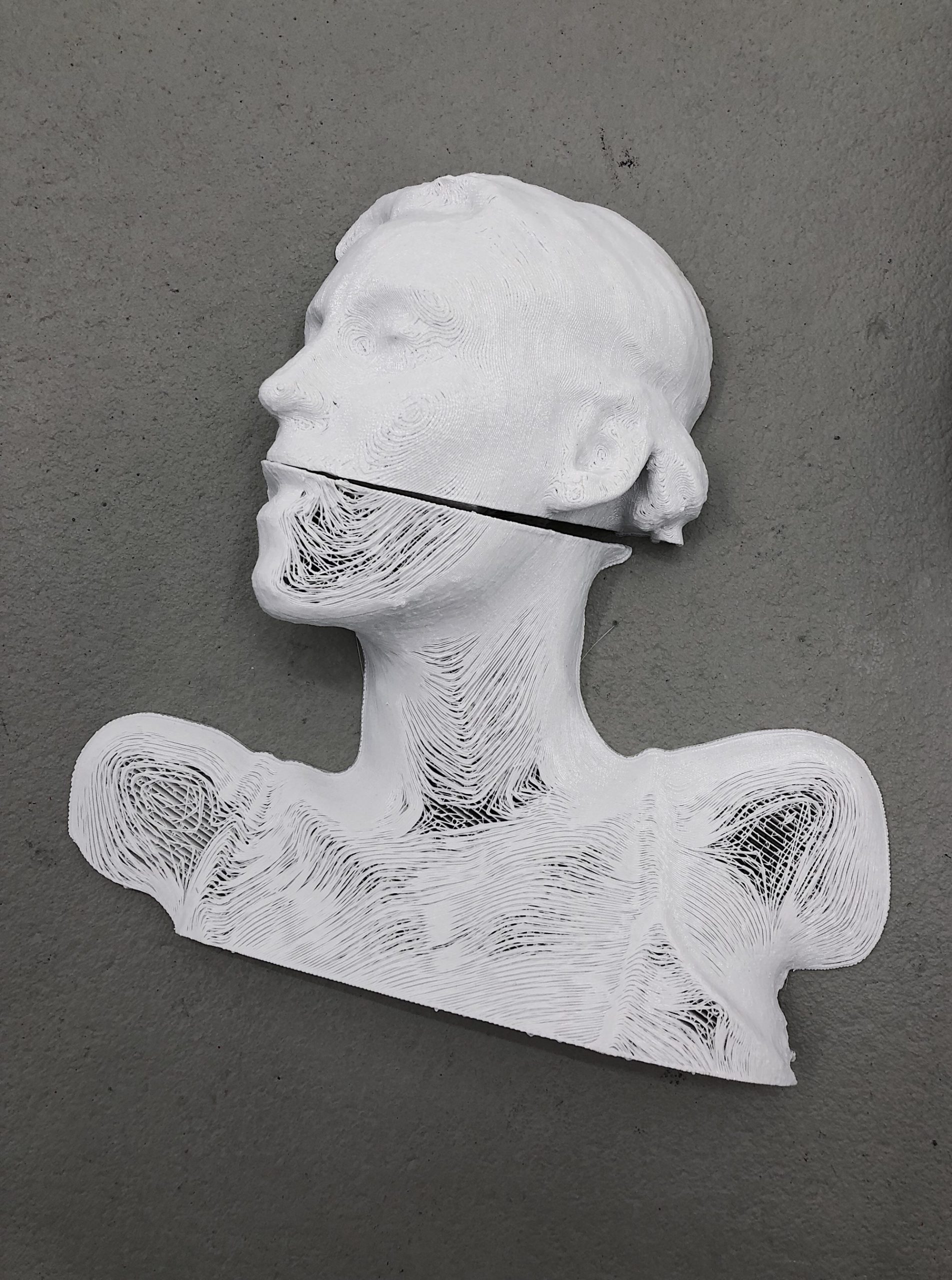Projecting the scale of social change with artist Yandell Walton
Yandell Walton is alarmed by climate change. Emma McRae speaks to the Melbourne projection artist whose ephemeral installations probe the impermanence at the very heart of existence.
Melbourne projection artist Yandell Walton’s ephemeral installations probe the impermanence at the very heart of existence. Always responsive to the architectures they inhabit, her works invite viewers into speculative scenarios that allow us to see and experience things we otherwise could not. In a series of new works presented as part of the ART+CLIMATE=CHANGE 2019 festival, Yandell explores the impact of human society on the ecological systems of the planet. Occupying The SUBSTATION galleries, the exhibition will present visions of a future world filled with debris, water, rubbish, cyborg remains and digital trees – a speculative world, devoid of human life, but created by humans if we fail to effectively address the crisis of climate change.
When I visit Yandell at her Collingwood studio, she has just returned from walking her two whippets, Sanchez and Desi, through the streets of Collingwood and Abbotsford, down to Dights Falls and along Merri Creek. On these walks, Yandell often picks up pieces of rubbish she finds lying in the streets and gutters. “It’s a wind tunnel down here and the rubbish gets pushed down and clogs up the gutters. Yarra City Council collects the rubbish and sweeps the streets, but there’s still so much.” Representative of our over-consumptive 21st-century lifestyles, this excess of waste has inspired one of the new works Yandell is developing for her solo exhibition at The SUBSTATION.
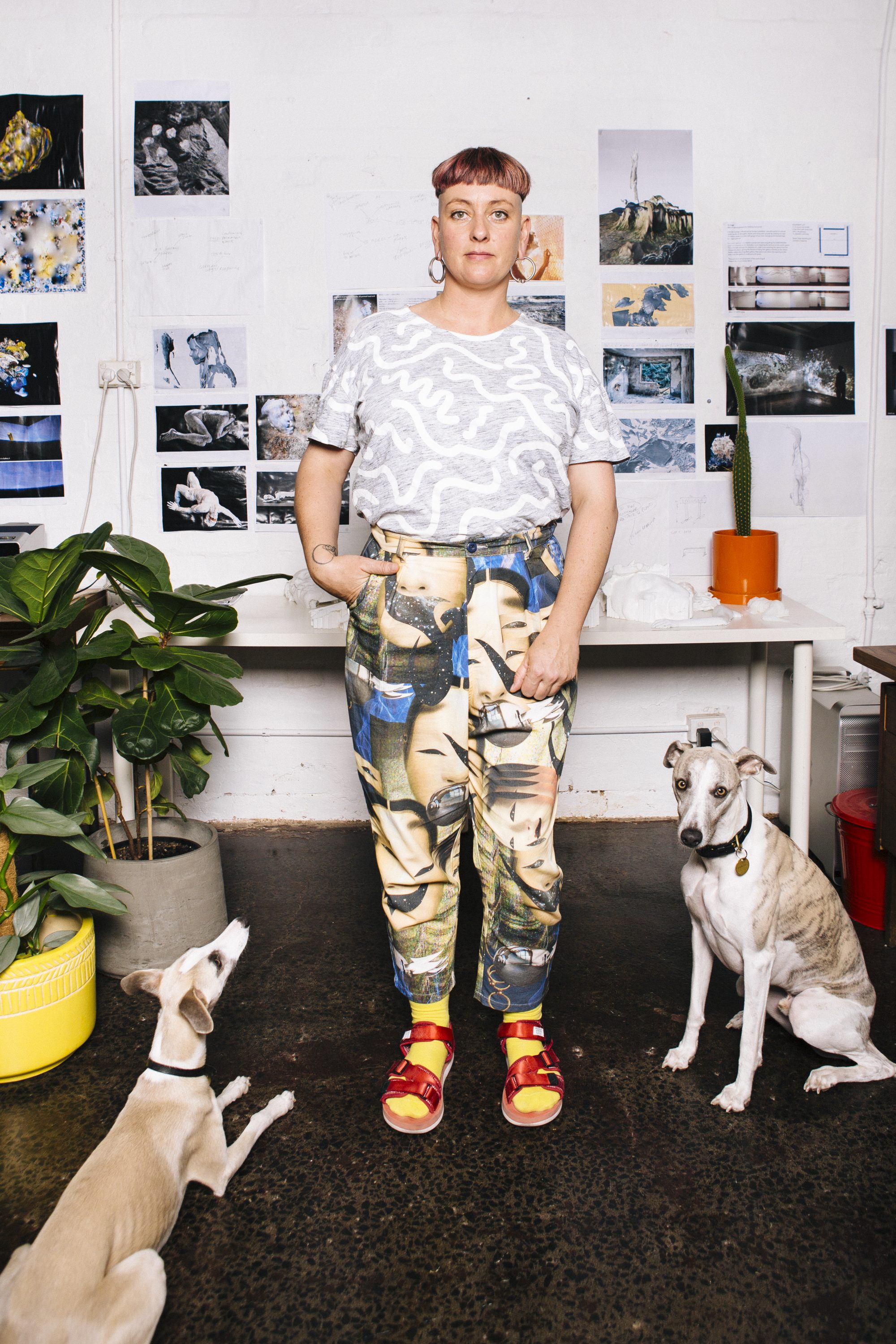
Titled Shifting Surrounds, the exhibition is a series of six new site-specific works that transform the gallery, throwing visitors into a time warp. The first thing visitors encounter is The Deadline, a red digital clock sitting in a pool of black water and displaying what Yandell says is “a hypothetical date in the future, when the world is uninhabitable due to climate change”. This date is taken from the report released by the UN Intergovernmental Panel on Climate Change (IPCC) in 2018, which tells us that “at current levels of greenhouse gas emissions, we could pass the 1.5°C marker as early as 2030, and no later than mid-century”.
“Those figures were alarming to me and this red digital countdown clock really represents that alarm.”
For most people, a visual countdown stirs a rising sense of discomfort, anxiety and possibly panic. “It’s alarming because we all know this is happening, but we’re not really doing anything about it. And there is an end date, especially if we keep going the way we are.” Panic is increasingly becoming the necessary response to climate change, as 16-year-old Swedish activist Greta Thunberg told world leaders at the World Economic Forum in January: “I don’t want you to be hopeful,” she said. “I want you to panic. I want you to feel the fear I feel every day. And then I want you to act.”
Yandell has been driven by the need to increase awareness of our impact on the planet since she visited a landfill site in 2010. “I was commissioned to make a work in Albury, so I went up there and visited the local tip. I’d never been to a landfill before, especially on foot, and it was incredible. The mass was overwhelming. I was blown away by it and created a work titled Landfill for that commission.” This was followed by Human Effect, an interactive public artwork. “[It is] very accessible and quite beautiful, but also very confronting; because as you approach the plant life, it dies in front of you.” Then, in 2016, she created 1500 per second during a residency with Digital Graffiti in Alys Beach, Florida, a digital projection work referencing the number of plastic bottles used in the United States.
Yandell has always been drawn to the temporal nature of projection – the way it merges the actual with the virtual to create immersive environments.
“I’m very interested in the tension between the ephemerality of projection and the solidity of the architectural form. Most of my work is site-responsive because, with projection, the space or object you’re projecting onto merges with the moving image and becomes part of the artwork.”
It seems fitting, then, that Shifting Surrounds is taking place in one of Melbourne’s oldest substations. Built in 1915 by Victorian Railways, Newport Substation provided electricity to the new electric suburban trains in the early 20th century and is a symbol of Australia’s optimistic embrace of new technologies at that time.
Yandell’s own use of emerging technologies – scanners, drones, 3D printers and digital animation, including the failed 3D prints and incomplete scans – echoes our continuing obsession with gadgets, as well as the failure of advanced technology to solve all our problems. The digital enables us to speculate on alternative futures and try things out. But, Yandell says, “it also creates a disconnect between nature and humanity. This body of work investigates how we are disconnecting from nature more and more: not thinking about the bigger picture, not thinking about the world.” While exploring how advances in technology have allowed us to do so much, Yandell also contemplates: what is the dark side?
“I have always made work about the impermanent nature of our existence and in this project the impermanence is definitely darker. It’s about a potential loss of our surroundings, of other animals, of life as we know it.”
These tensions – between the natural and human-made, between fragility and power – resonate in the exhibition, with works including Connecting Systems, a forest of digital trees as a high-definition yet diminished version of a nature that might soon not exist; Uprise, a digital tsunami that floods across the walls and down the stairs; Traces, an industrial wasteland littered with the remains of post-human bodies; Internal Current, a river of refuse flowing down a drain. And, finally, Oblivion, a projection of NASA footage showing the now-familiar yet always wondrous sight of our planet floating in space, partially obscured by a piece of junk that will orbit Earth long after the clock reaches the deadline. In this context, the seeming insignificance of one Tetra Pak thrown in the bin (or the gutter) is transformed into a slightly comical, yet profoundly disturbing spectre of a wasted future, recalling collective visions of human vulnerability from films such as 2001: A Space Odyssey or Gravity. But, in Yandell’s images, humans are absent and all that remains is the rubbish. “We have to question,” she says, “how effective our recycling methods are when 79 percent of our plastic waste is accumulating either in the world’s landfills or as litter in the natural environment, and contributing to ocean garbage patches, like the one in the Pacific Ocean, which is estimated to be 1.6 million square kilometres or three times the size of France.”
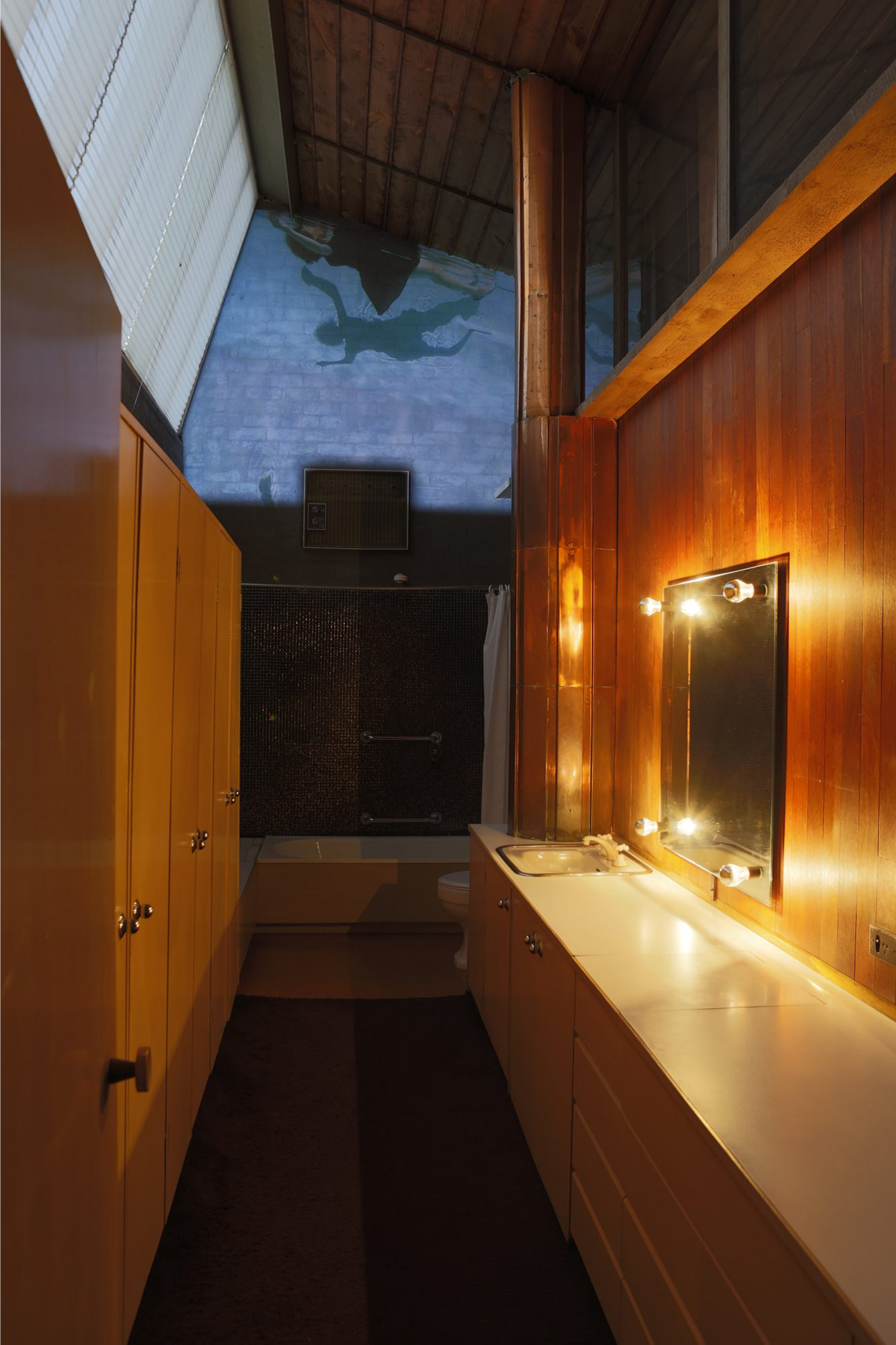
In Shifting Surrounds, Yandell paints a dark picture of our possible future world, in the hope that immersion within these speculative scenarios can have a trigger effect that results in action. “Art is just a catalyst to encourage people to think about these ideas. It’s part of a discussion.” At the end of the day, Yandell looks to social rather than political action, as the arena of change. “If you’re looking at the statistics and what has actually happened in the last 50 to 100 years, it’s very hard to feel hopeful. But social action is the only thing that can create change – because small change is going to end up being large if we’re all focused on it.”
Thank you to Yandell for sharing her work and thoughts on art and climate change with us. More information about her work can be found on her website. This article also appears in our print issue #11: Transitions. You can see Shifting Surrounds at The SUBSTATION until 20 July – details here.
